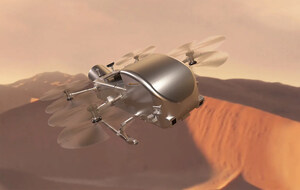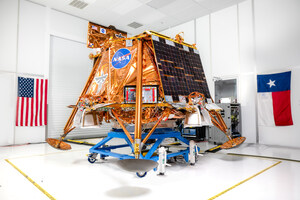WASHINGTON, July 13, 2014 /PRNewswire-USNewswire/ -- A multitude of NASA research investigations, crew provisions, hardware and science experiments from across the country is headed to the International Space Station aboard Orbital Sciences Corp.'s Cygnus spacecraft. The cargo craft launched aboard Orbital's Antares rocket from NASA's Wallops Flight Facility in Virginia at 12:52 p.m. EDT Sunday.
The mission is the company's second cargo delivery flight to the station through a $1.9 billion NASA Commercial Resupply Services contract. Orbital will fly at least eight cargo missions to the space station through 2016.
The Orbital-2 mission is carrying almost 3,300 pounds of supplies to the station, which will expand the research capability of the Expedition 40 crew members. Among the research investigations headed to the orbital laboratory are a flock of nanosatellites designed to take images of Earth, developed by Planet Labs of San Francisco; and a satellite-based investigation called TechEdSat-4 built by NASA's Ames Research Center in Moffett Field, California, which aims to develop technology that will eventually enable small samples to be returned to Earth from the space station.
An experiment managed by Ames called Smart Synchronized Position Hold, Engage, Reorient Experimental Satellites (SPHERES) features a sensor and multiple cameras to enable 3-D mapping and robotic navigation inside the space station. In addition, a host of student experiments are on board as part of the Student Spaceflight Experiment Program, an initiative of the National Center for Earth and Space Science Education and NanoRacks.
Expedition 40 Commander Steve Swanson of NASA, with help from Alexander Gerst of the European Space Agency, will use the station's robotic arm to take hold of Cygnus at 6:39 a.m. Wednesday, July 16. In August, the capsule, which will be filled with trash, will depart the station and burn up during reentry in Earth's atmosphere.
The International Space Station is a convergence of science, technology and human innovation that demonstrates new technologies and makes research breakthroughs not possible on Earth. The space station has been continuously occupied since November 2000. In that time, it has been visited by more than 200 people and a variety of international and commercial spacecraft. The space station remains the springboard to NASA's next great leap in exploration, including future missions to an asteroid and Mars.
For more information about the Orbital-2 mission and the International Space Station, visit:
http://www.nasa.gov/station
Photo - http://photos.prnewswire.com/prnh/20081007/38461LOGO
SOURCE NASA
WANT YOUR COMPANY'S NEWS FEATURED ON PRNEWSWIRE.COM?
Newsrooms &
Influencers
Digital Media
Outlets
Journalists
Opted In




Share this article